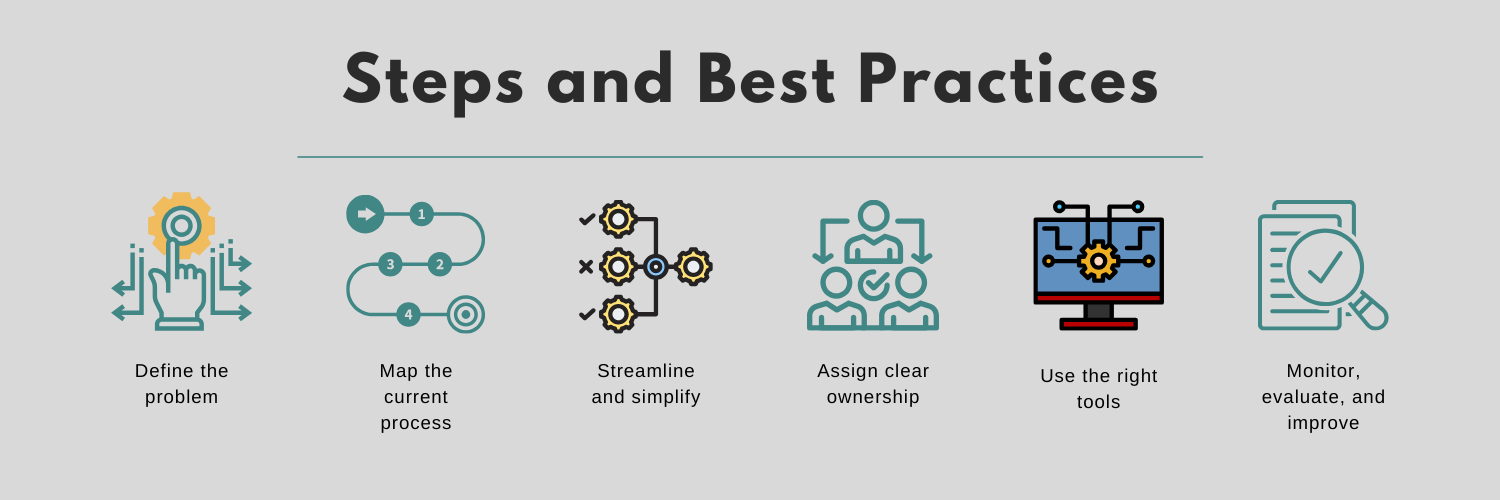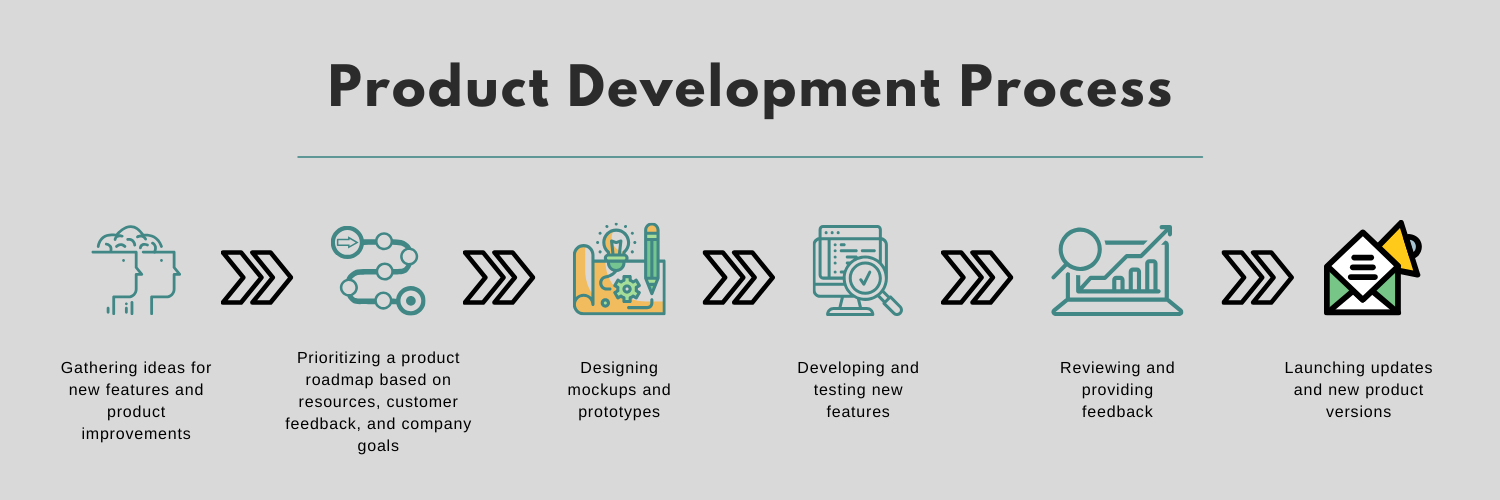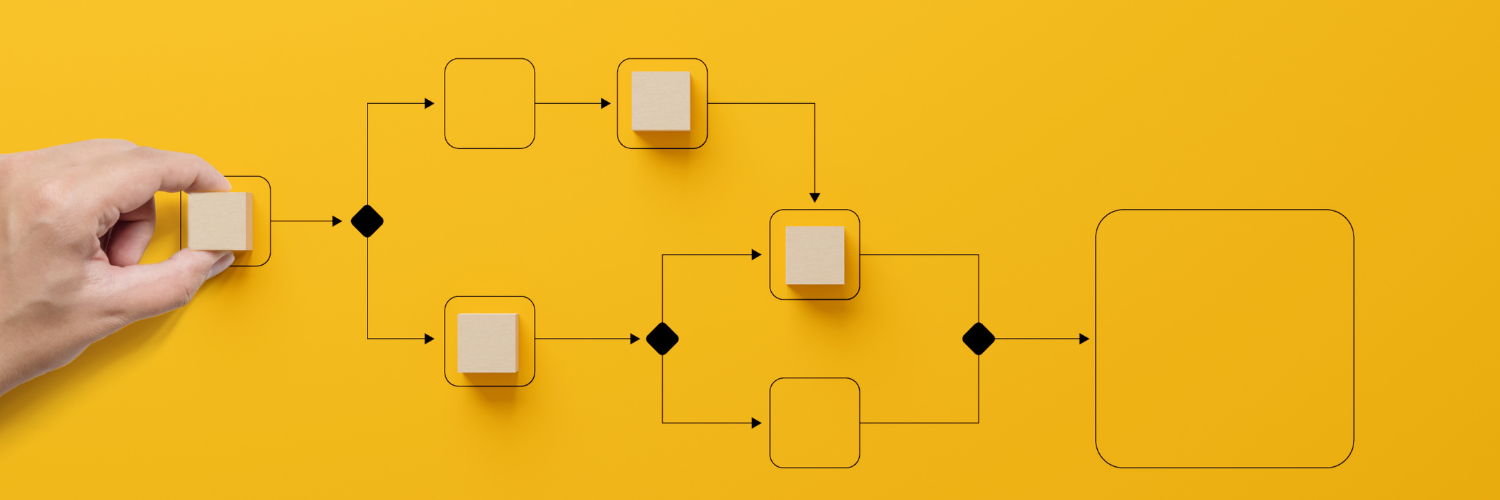Table of Contents:
- What Is a Workflow: Definition, Importance, Components, and Types
- The Benefits of Using Workflows: Increased Efficiency, Productivity and More
- How to Design Effective Workflows: Steps and Best Practices
- Implementing New Workflows: Training, Testing and Iteration
- What Does a Workflow Look Like?
Introduction
You’ve got big plans and ambitious goals, but without solid workflows in place, you’ll never achieve them.
In a world where business processes are evolving and complexity is rising, proficiency in workflow management is invaluable.
Workflows are essential for ensuring tasks are carried out systematically, efficiently, and consistently.
When you design effective workflows, you gain clarity, reduce wasted time and effort, and boost productivity.
In this comprehensive blog, we will delve into what workflows are, why they are crucial, and how to effectively implement them in your organization.
In this article, you’ll learn everything you need to know about workflow.
We’ll start from the basics by exploring what a workflow really is and why they’re so important.
Then we’ll dive into the basic components of a workflow, various types of workflows, different workflow categories, and tips for implementing those workflows in a way that motivates your team and creates lasting change.
By the end, you’ll have the skills and knowledge to build customized workflows that transform the way you work.
What Is a Workflow: Definition, Importance, Components, and Types
In a nutshell, a workflow is a series of steps that outline how a process operates from start to finish.
It ensures tasks are done right and at the right time, creating a bridge between people, processes, and technology.
Workflow is the map that charts the journey of tasks towards achieving set objectives.
Why Are Workflows Important?
Well-designed workflows are essential for any business because they:
- Increase productivity by reducing wasted time and effort. Employees know exactly what they need to do and in what order.
- Decrease errors and missed steps. Workflows provide a systematic framework to follow.
- Improve communication between teams and departments. Everyone understands how work is meant to flow through the organization.
- Allow for analysis and optimization. You can evaluate workflows to find and fix any bottlenecks or inefficiencies.
- Ensure consistency across the board. Workflows standardize your key processes so work is done the same way every time.
Basic Components of a Workflow
Understanding workflow means understanding its core components. As businesses strive for efficiency, a solid grasp of workflow components is fundamental.
These components play a pivotal role in shaping tasks, driving actions, and leading organizations toward set goals.

Tasks are the elementary units of any workflow. Each individual action that needs to be completed to reach the end goal is defined as a task within the project's scope.
For instance, if the workflow is set for a blog publication process, tasks may include creating a draft, editing the content, formatting the content, and uploading it onto the website.

Actors refer to the entities that perform the tasks. These entities can be humans (employees or team members) or systems (software tools or machinery).
By defining the actors in a workflow, we assign responsibility for the execution of tasks.

Referred to as "business rules" or "decision criteria," conditions are the parameters or guidelines that dictate when a task can begin or end or the flow of tasks in a process.
Conditions could be anything from a task’s status to a certain date.

Transitions are the links between tasks. They serve as the pathways guiding tasks from one to another, depending on the established rules or conditions.
Transitions can influence both the order of task execution and the direction of workflow processes, like loops or decision branches.
Types of Workflow
There's a range of workflow types you can leverage based on your business's unique needs:
The sequential workflow is the model of simplicity. As the name suggests, tasks are executed in a prescribed order, with one following after the other.
Each task's initiation is dependent on the previous task's completion. This type of workflow is ideal for linear processes with a start and end point, where tasks do not need to be repeated or executed simultaneously.
In stark contrast to Sequential Workflow, the State Machine Workflow allows greater flexibility and dynamism.
This workflow type doesn't solely progress in a single direction but can move backward or forward.
This is ideal for processes that may need to revert to a previous step, depending on inputs or conditions, or loop through certain tasks.
An example would be a document review process, where tasks might need to be repeated until approval is achieved.
This workflow is the symbol of multi-tasking. In Parallel Workflow, multiple tasks are executed simultaneously within the same process.
This is suited for processes that do not require a sequential execution of tasks, promoting speed and efficiency.
A common example is the recruitment process, where the screening of multiple candidates often happens concurrently.
Also known as rules-driven or business rule workflows, conditional workflows adapt to specific conditions or events.
They are designed to trigger certain actions based on predefined rules or criteria. This is especially useful in complex business processes where activities depend on conditional statements or decision branches.
The Benefits of Using Workflows: Increased Efficiency, Productivity and More
Using workflows provides so many benefits that will transform how you work. When designed well, workflows can increase your efficiency, productivity, and quality of work.
Increased Efficiency
Workflows streamline your processes by mapping out each step required to complete a task.
This helps reduce wasted time and effort in figuring out what needs to be done next.
With a clear set of steps to follow, you'll breeze through work faster and avoid missing any critical actions.
Improved Productivity
Having structured workflows in place helps minimize distractions and keeps you focused on high-priority work.
You'll have a plan for tackling tasks and know exactly what needs to get done, allowing you to plow through more in less time.
This boost in productivity will skyrocket the volume and quality of work you produce.
Better Quality of Work
Workflows ensure consistency and help reduce errors by providing a standardized process to follow each time a task is performed.
They give guidance on the proper sequence of steps and catch any potential mistakes early on. The end result is higher quality work with fewer defects.
Informed Decision Making
Detailed workflows provide visibility into each phase of a process. This gives you valuable data and insights to help identify bottlenecks, redundancies, and opportunities for improvement.
You'll have the information needed to make data-driven decisions about optimizing and enhancing your workflows.
How to Design Effective Workflows: Steps and Best Practices
Designing effective workflows requires following some key best practices. By taking the time to thoughtfully map out how work actually gets done, you’ll gain valuable insights into improving processes and boosting productivity.

Define the problem
Clearly identify the problem you’re trying to solve or the process you want to improve.
Get input from people directly involved in the work to understand their pain points and needs.
This helps ensure your solution will be targeted and useful.
Map the current process
Detail each step of how things currently get done. Look for redundancies, bottlenecks, and opportunities for improvement.
You can use various process mapping techniques like swim lane diagrams or value stream maps.
Streamline and simplify
Remove any unnecessary or redundant steps. Simplify complex processes into more manageable chunks. Look for ways to minimize wasted time and effort.
The simpler and more straightforward the workflow, the more effective it will be.
Assign clear ownership
Make sure each step in the process has an owner who is responsible and accountable.
This helps prevent confusion over who should be doing what and empowers people to make decisions within their scope of work.
Use the right tools
Having the proper tools and technology in place to support your workflows is key.
Things like project management software, automation tools, communication platforms, and file-sharing apps can help streamline processes and keep everyone on the same page.
Monitor, evaluate, and improve
Once you’ve designed and implemented your new workflows, monitor how things are working. Look for any issues that come up and make tweaks as needed.
Regularly re-evaluating your processes helps ensure maximum efficiency and productivity over the long run.
Ready to streamline your work processes and fuel your business growth? Sanka is the answer!
Implementing New Workflows: Training, Testing and Iteration
Once you’ve designed solid workflows, the next step is implementing them. This includes training your team, testing the workflows, and making iterative improvements.
Training Your Team
For new workflows to be effective, everyone involved needs to be on the same page about how they function and why they’re important.
Schedule training sessions to walk through the workflows step-by-step. Explain the reasoning behind each part of the process.
Allow time for questions and address any concerns. Your team will be more invested if they understand the benefits of the new workflows.
Testing and Iteration
No workflow is perfect right out of the gate. Do trial runs of each new workflow to identify any issues before fully implementing them.
Look for parts that are redundant, unnecessary, or just not working. Get feedback from anyone involved in the workflows.
Then make changes and test again. Repeat this process until the workflows are streamlined and productive.
Even after official implementation, continue monitoring how the workflows function.
See if there are any recurring problems or new ways to improve efficiency. Be open to making minor tweaks and adjustments to optimize the workflows.
Small changes, like reordering certain steps or modifying checklists, can make a big difference.
The key is not to get too attached to any one approach. With regular evaluation and modification, you can keep refining your workflows to best suit your team and business needs.
Flexibility and a willingness to adapt will help ensure long-term success.
With comprehensive training, thorough testing, and ongoing iteration, implementing new workflows can be a smooth process.
What Does a Workflow Look Like?
Workflows can be depicted using flowcharts, diagrams, or process maps that indicate the steps involved, the order in which they should be performed, decision points, and any dependencies or branching paths.
Workflows clarify each stakeholder's responsibilities, streamline communication, and enhance the overall efficiency and effectiveness of processes.
A basic workflow can comprise the following elements:
- Tasks: Individual activities or units of work performed to attain a specific objective.
- Arrows: Connectors that represent the flow of the process and show the direction and sequence of tasks.
- Decision Points: Represented as diamond shapes, these indicate points where a decision is required, and the process diverges based on the decision made.
- Start and End Points: Often represented with circles or rounded rectangles, these indicate the beginning and the end of the workflow.
- Roles and Responsibilities: Each task is assigned to an individual, team, or department responsible for its completion.
Real-world workflows can have a huge impact on productivity and results. Here are an examples of workflows in product development:

Effective workflows provide clarity, improve collaboration, increase accountability, and help to achieve better outcomes. When designed well, they can make a huge impact on productivity and results.
Conclusion
So there you have it, a complete guide to workflow. In conclusion, the key to business efficiency lies in understanding and utilizing workflows.
Workflows are more than just processes; they are the foundation of efficient, organized, and productive organizations.
Before you know it, you'll be automating and optimizing key processes across your business.
By understanding the components, types, and categories of workflows and implementing them effectively, businesses can boost productivity, reduce errors, and adapt to changing needs.
Put in the work now to design workflows that get results, and you'll reap the benefits for years to come. Workflow mastery will change the game for your business.
Now go out there and make it happen!








